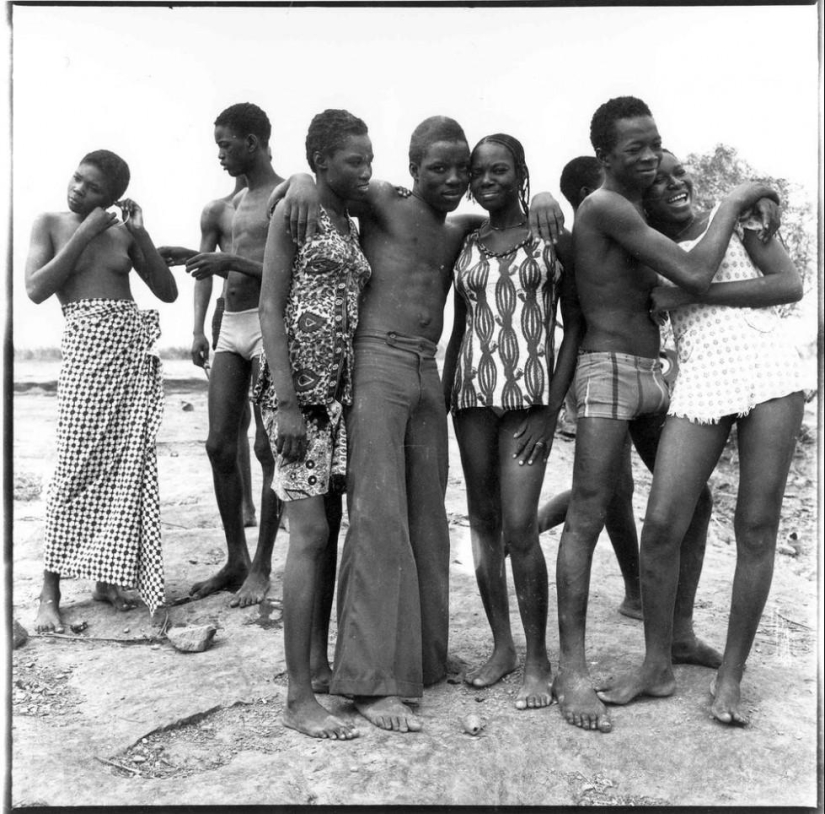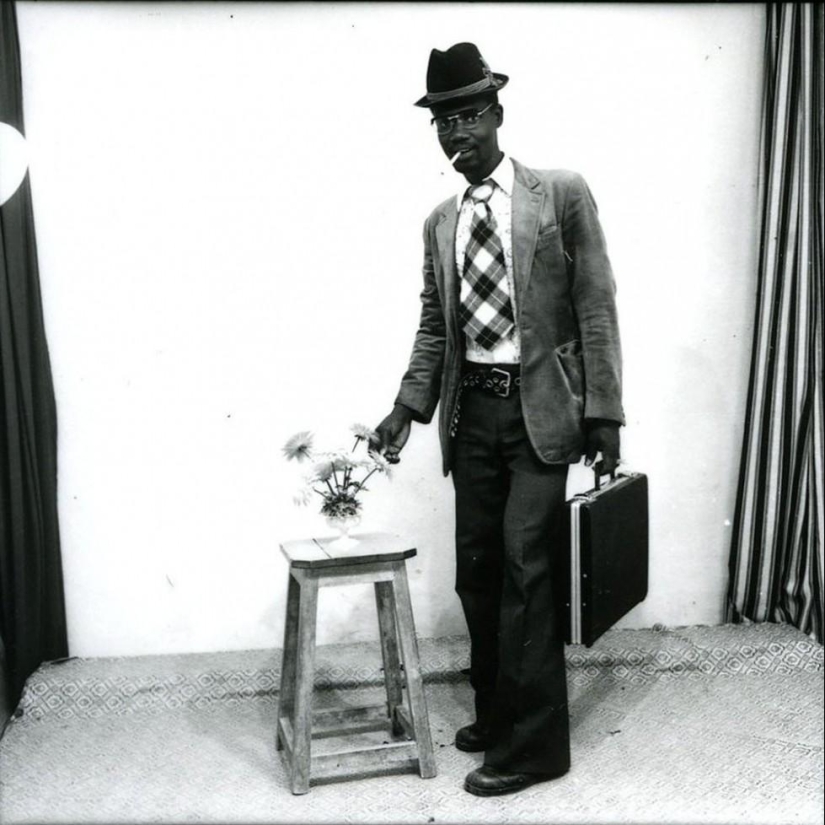Africa of the 50-70s of the last century through the lens of Malick Sidibé
Categories: Africa
By Pictolic https://pictolic.com/article/africa-of-the-50-70s-of-the-last-century-through-the-lens-of-malick-sidibe.htmlFor Westerners, Africa is either national parks and tourist attractions or endless wars and starving children. It is very rare to see photographs reflecting other aspects of life on this continent. In this sense, the photographs of Malian photographer Malick Sidibé provide a unique opportunity to look at Africa through different eyes.
An African photographer from the state of Mali photographed fashionable African youth of the 1950s–1970s in elegant clothes, dancing fashionable European dances, and refuted the idea of Africa as a continent of starving children and their feral parents. It may seem to some that Sidibé avoided the “truth of life” that Western reporters love so much, but he simply showed another side of African life.

 1. Malick Sidibé was born in 1935 into a Fula-speaking family in a small village in Mali. He graduated from school in 1952. After recognition of his talent as a draftsman, he was accepted into the Sudanese Crafts School in Bamako, from which he graduated in 1955.
1. Malick Sidibé was born in 1935 into a Fula-speaking family in a small village in Mali. He graduated from school in 1952. After recognition of his talent as a draftsman, he was accepted into the Sudanese Crafts School in Bamako, from which he graduated in 1955.
 2. Malik decorated Gerard Guillyat’s “Photoservice” store, and Guillyat offered him a position as an apprentice. So Malik began to study photography in 1956. He opened Studio Malik in 1958 in the center of Bamako in Bagadadji, on 30th Street, where he still prints portraits and repairs cameras.
2. Malik decorated Gerard Guillyat’s “Photoservice” store, and Guillyat offered him a position as an apprentice. So Malik began to study photography in 1956. He opened Studio Malik in 1958 in the center of Bamako in Bagadadji, on 30th Street, where he still prints portraits and repairs cameras.
 3. The roaring 50s and independence gave birth to a new generation of photographers who were fully involved in the cultural and social life they documented.
3. The roaring 50s and independence gave birth to a new generation of photographers who were fully involved in the cultural and social life they documented.
 4. Malick Sidibe was the main character in this whole thing. Highly appreciated by the youth, he was present at all the soirees, where elegantly dressed club youth learned new dances from Europe and Cuba.
4. Malick Sidibe was the main character in this whole thing. Highly appreciated by the youth, he was present at all the soirees, where elegantly dressed club youth learned new dances from Europe and Cuba.
 5. In 1957, he was the only reporter in Bamako, covering all the events, holidays and parties. On Saturdays these parties lasted until dawn and continued on Sunday on the banks of the Niger River.
5. In 1957, he was the only reporter in Bamako, covering all the events, holidays and parties. On Saturdays these parties lasted until dawn and continued on Sunday on the banks of the Niger River.
 6.
6.
 7.
7.
 8. He took simple photographs that truly created a sense of presence. They have a light-hearted and spontaneous feel to them - he captured a fun experience full of laughter and life.
8. He took simple photographs that truly created a sense of presence. They have a light-hearted and spontaneous feel to them - he captured a fun experience full of laughter and life.
 9. He retired from active work in 1978, but continued to shoot in the studio and repair cameras. When his work received international recognition, new horizons opened up for him.
9. He retired from active work in 1978, but continued to shoot in the studio and repair cameras. When his work received international recognition, new horizons opened up for him.
 10. People crowded into his studio, magazines bought photo reports, he was invited everywhere to photo exhibitions and conferences. In 2003 he received the Hasselblad Award
10. People crowded into his studio, magazines bought photo reports, he was invited everywhere to photo exhibitions and conferences. In 2003 he received the Hasselblad Award
 eleven.
eleven.
 12.
12.
 13.
13.
 14.
14.
 15.
15.
 16.
16.
 17.
17.
 18.
18.
Recent articles

Michel Comte is one of the most famous photographers of our time. He is the author of hundreds of beautiful fashion shots and ...

American Dian Fossey was called the “Queen of the Monkeys.” This brave woman dedicated her life to studying and protecting ...

Contrary to popular belief, not all things made with your own hands have any value. And now you will see... In this collection we ...